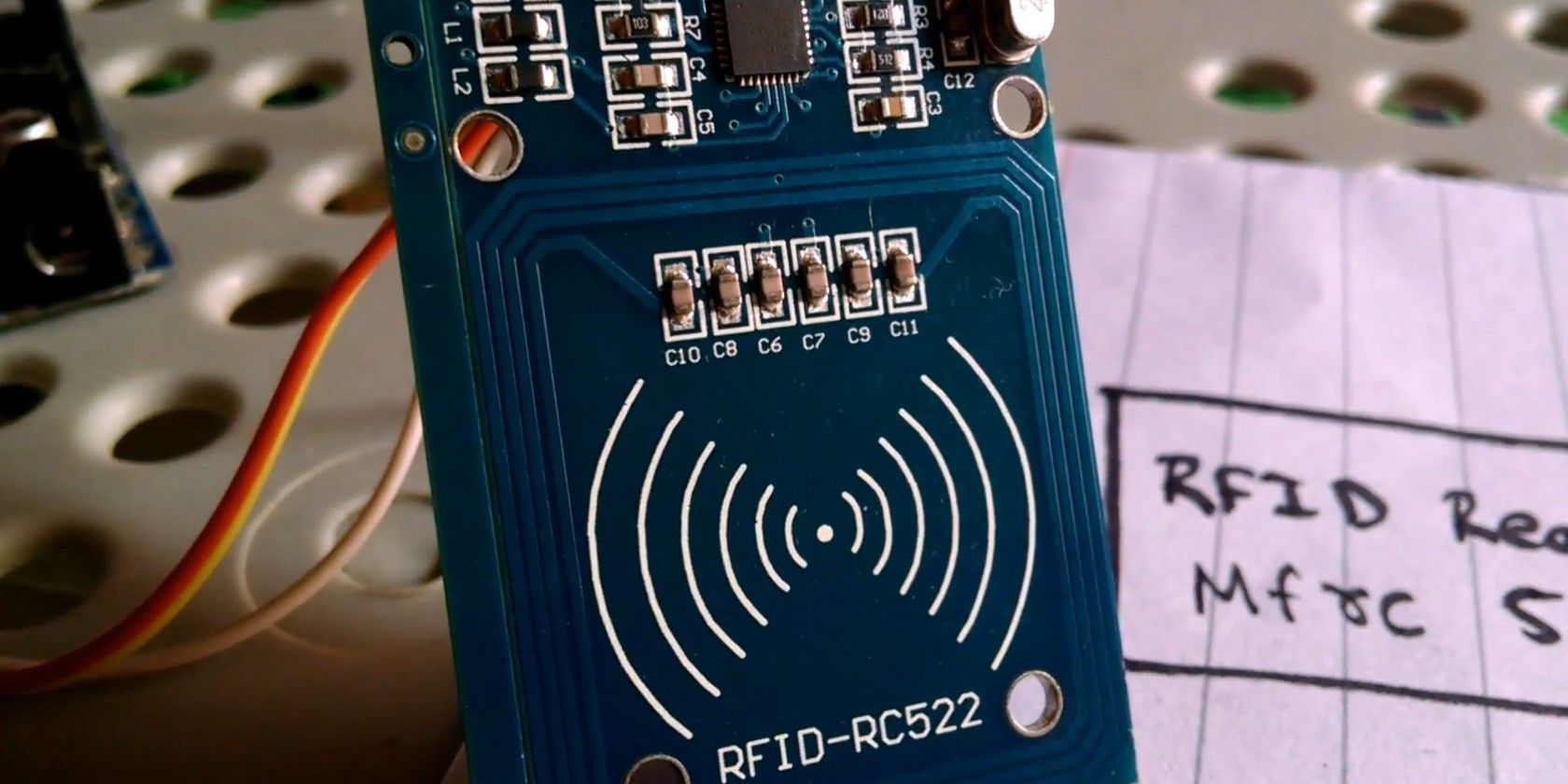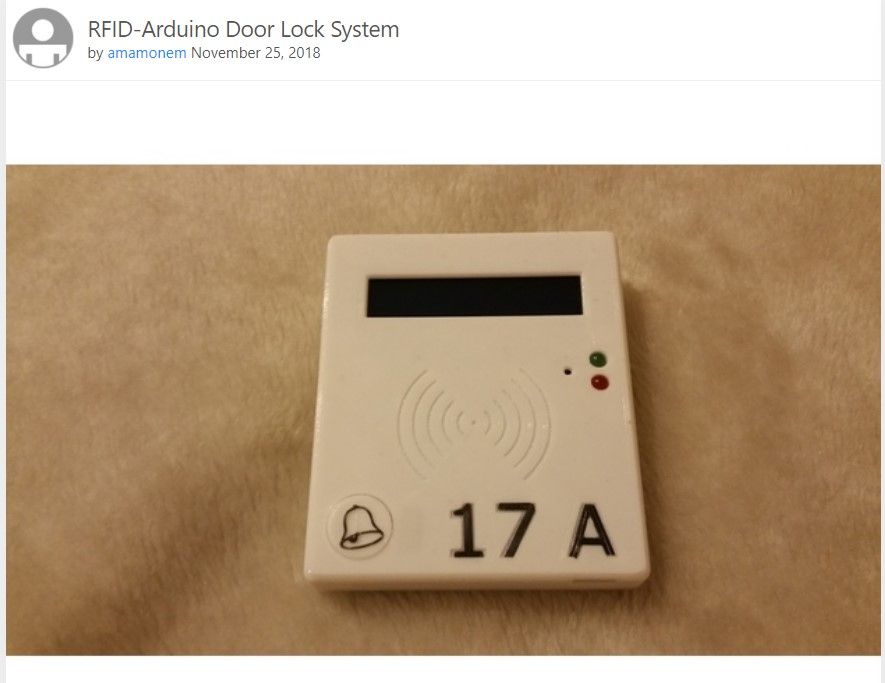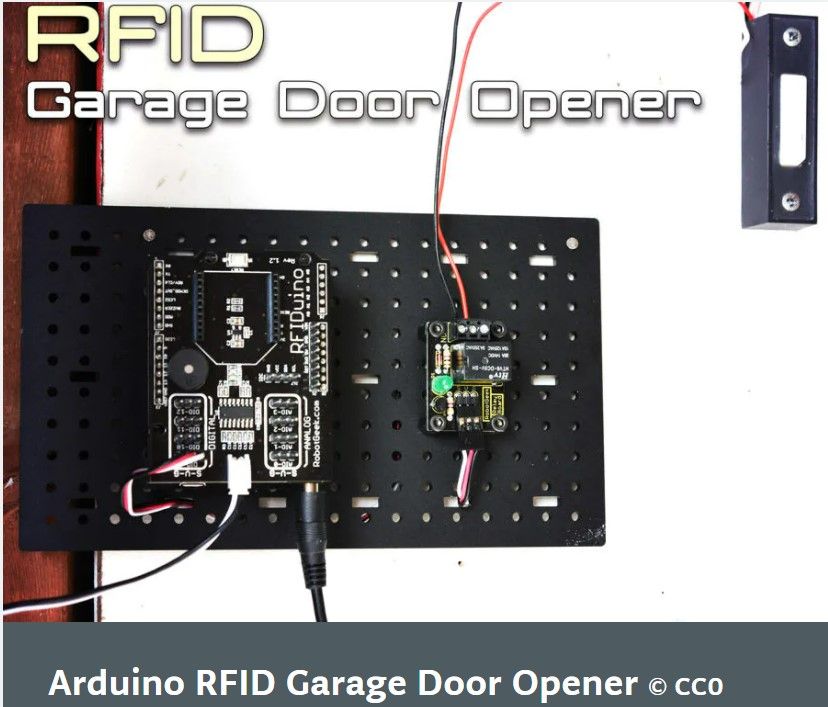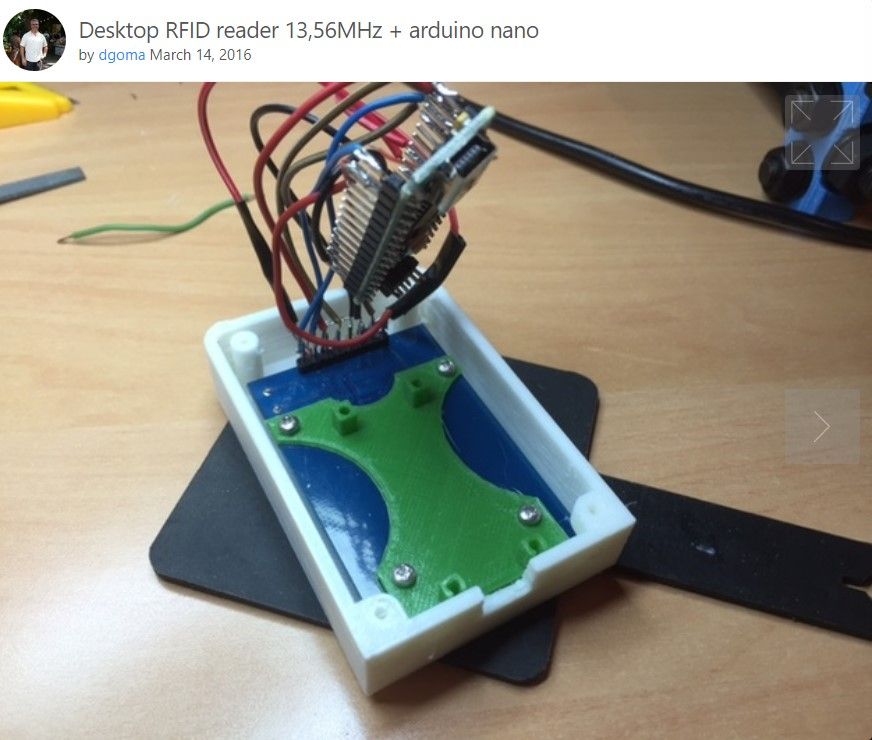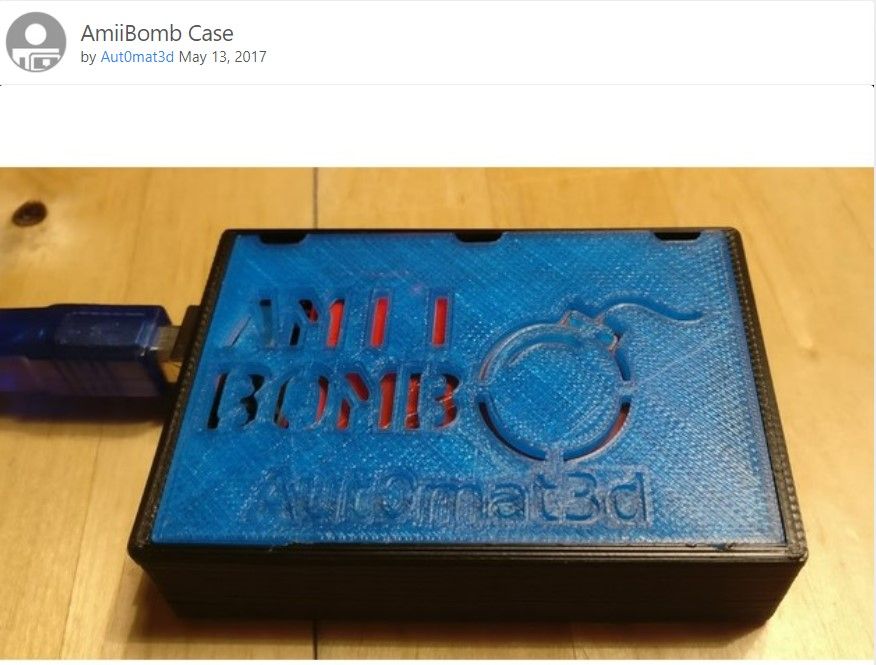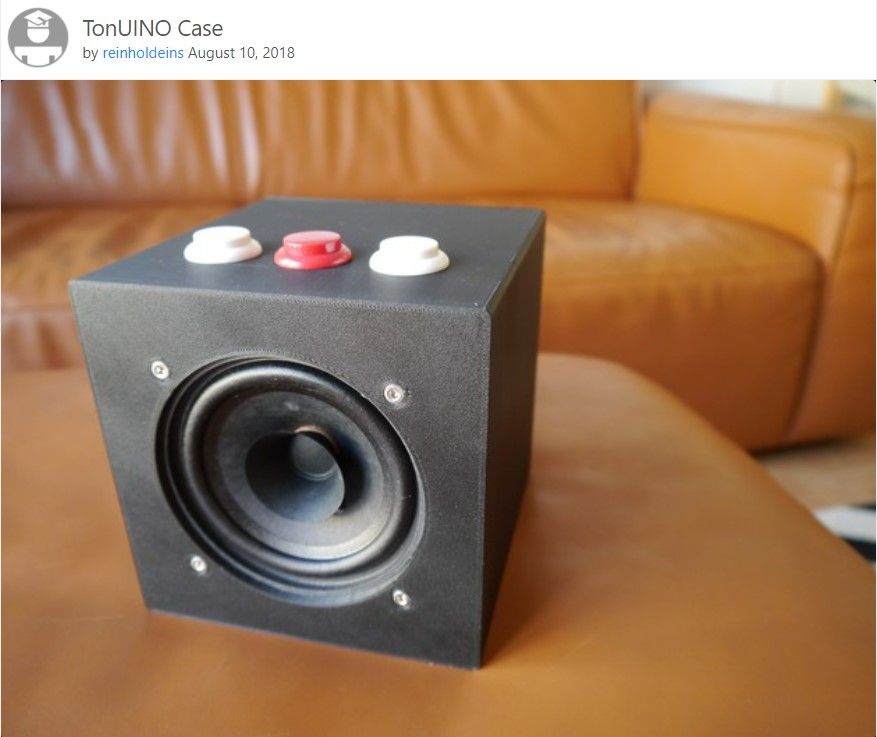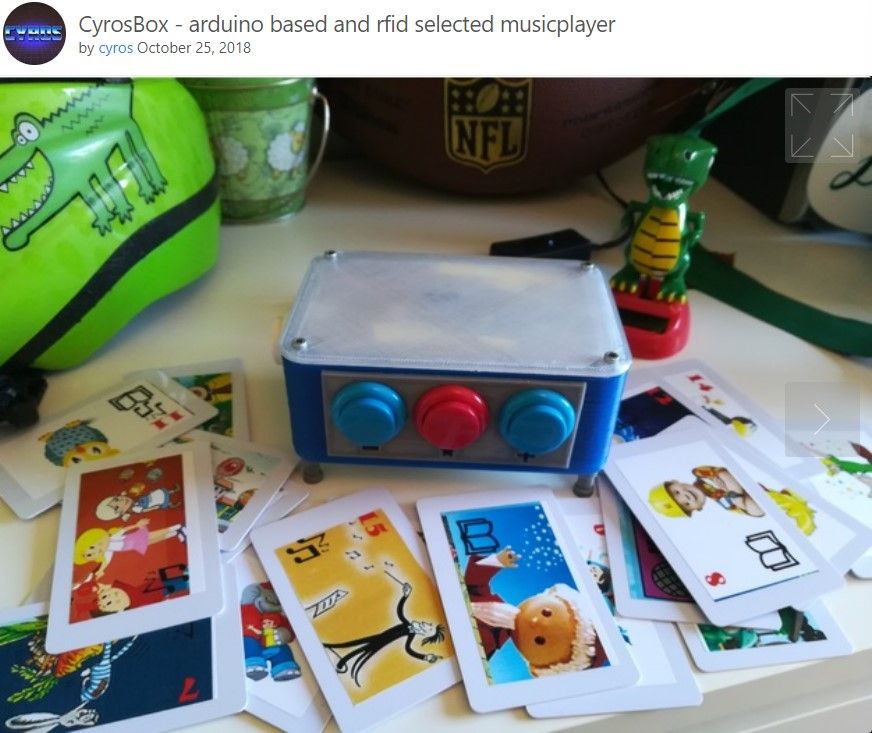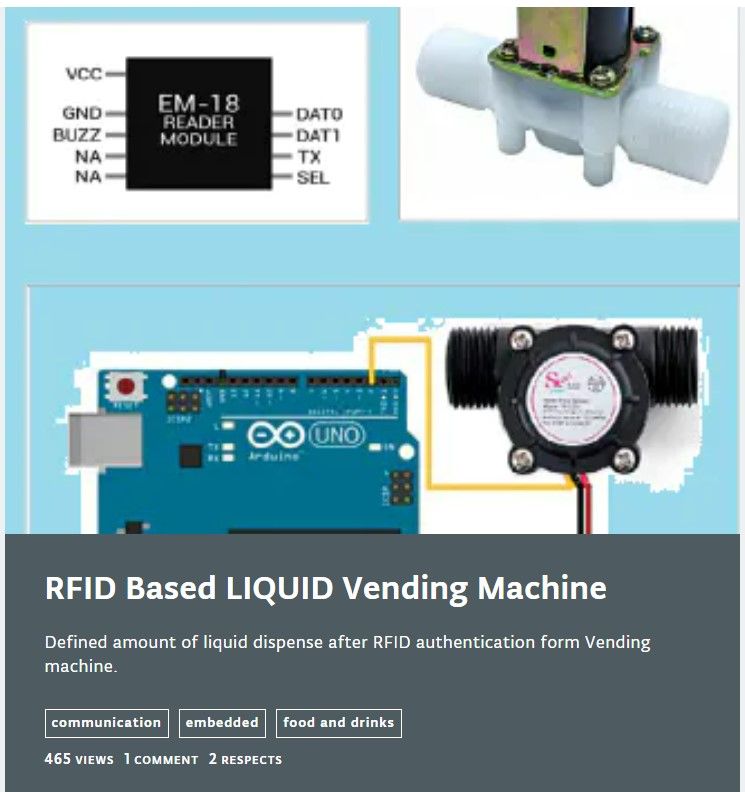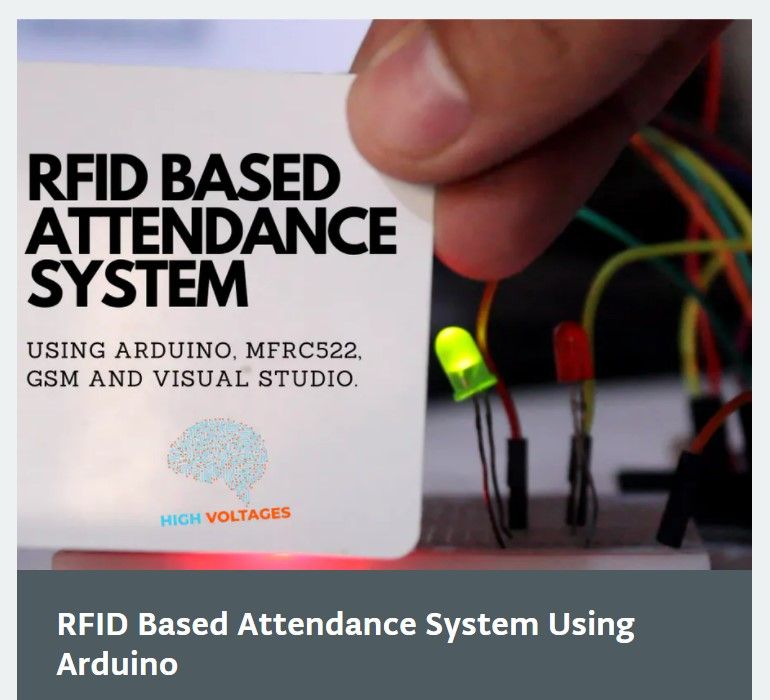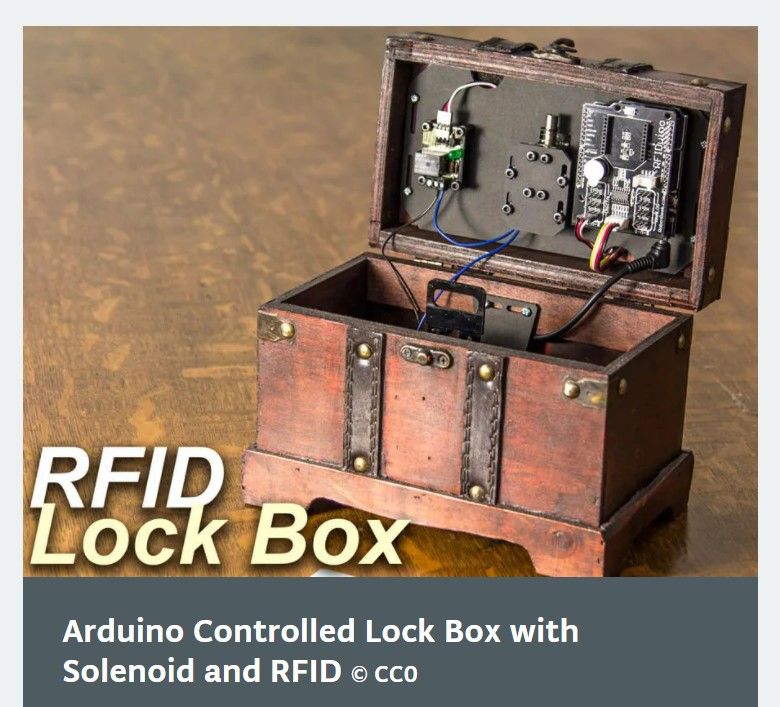The Arduino is a range of development boards that was designed for educational purposes. It has since been used by hobbyists and sometimes even commercially. Some boards are 8-bit while others are 32-bit microcontrollers.
However, all boards are capable of a wide variety of applications, from LEDs, robotics, wearables, and IoT to RFID projects. In this article, we'll take a look at 10 impressive RFID projects made by the maker community.
1. RFID-Arduino Door Lock System
It is a DIY door lock made with an Arduino Nano, an LCD module, and an RFID module specifically based on the RC522 chip. The maker has provided the code in a .RAR file found on its Thingiverse download section. As an alternative, another maker has created another enclosure for their build, which is also based on the RC522. With an LCD display, names, house number, temperature, access approval, or access denial messages can be shown.
2. Arduino RFID Garage Door Opener
Using the power of radio frequency identification technology, you could build your own garage door opener with the Arduino. This home automation project includes the use of RobotGeek boards, including the Geekduino, an Arduino compatible development board made for robotics. Also used in this project is an Arduino Uno. Basically, the maker has bridged a connection between the opener switch for their garage door, and a RobotGeek Relay board.
3. Desktop RFID Reader 13,56MHz + Arduino Nano
It's said that RFID readers or scanners can be hacked. Why not make your own one instead. Desktop RFID readers are powered and controlled with a USB cable, so it’s a quick way to read/write RFID tags. The reading distance is usually within the range of 10cm for HF devices, or up to one and half meters for UHF ones.
As its name suggests, this is an RFID reader that will fit on your desktop. At the heart of it is an Arduino Nano which has made it as compact as possible. While the code isn’t provided, another maker has done so in this RFID with Arduino Nano Instructable.
4. AmiiBomb for Reading/Writing Amiibo Stuff
Amiibo are interactive figures and cards that connect to Nintendo games via WiFi communication. It is based on an Arduino Uno with an RFID reader module connected up. It is capable of reading and writing Amiibo stuff. The enclosure is modified from two Thingiverse files, Customizable Arduino Tray and RFID-RC522 OpenSCAD Model. Aside from the Arduino Uno, an RFID reader, hot glue, double-sided tape, wires, USB-cable, and screws, is the amiibomb-uino software. The maker recommends printing with ABS filament at 40 percent infill.
5. TonUINO - DIY Music Box
Based on the popular Tonie music system, this is the TonUINO, an Arduino-based DIY music box for kids. There is an RFID module inside and a mount in the enclosure so it can easily slide in. There are also alternative enclosures such as the TonUINO Case with Quick Charge and Card Box and the Tonuino 18650 Hörspiel Speaker.
6. CyrosBox - Arduino-Based and RFID Selected Music Player
Select songs based on RFID in this DIY MP3 player made with an Arduino. The enclosure was 3D printed and the arcade buttons are 24mm in diameter. The maker notes that it is possible to add more buttons by remixing the design or drilling holes into the base case. During 3D printing, it is recommended to use supports and an infill of 20 to 100 percent.
7. "Whiskey and Coke" RFID Lock Box
This lockbox was designed after the maker was inspired by puzzle rooms in their city. On it, a tiny bottle of Jack Daniels and a Coca Cola logo can be found. Inside, an RFID module, Arduino Nano, two SG90 servos, and a 9V battery can be found.
The code works by testing the two RFID chips involved. One of the chips is found on the RFID card that is the master card, which will always open the box. The other chip is found to be used to unlock the box. It is written to EEPROM where data is stored even if the power is cut off by accident.
8. RFID Based LIQUID Vending Machine
It is a vending machine made with an Arduino. Simply swipe an RFID card across the reader and after five seconds, liquid is dispersed. Makers can choose how much liquid will be dispersed from the machine by changing the code. At its heart is an Arduino Uno, analog water flow sensor, RFID reader, liquid crystal display, and a solenoid.
9. RFID Based Attendance System Using Arduino
Automatic Identification and Data Capture (AIDC) are methods used to automatically identify and collect data about objects. RFID is a part of ADIC. Using radio waves, data can be collected and entered to a system with no human intervention.
Each RFID tag contains an integrated circuit and an antenna, used to transmit data to the RFID reader. The data is then converted into a more usable form. This information is transferred to a host computer where data is stored in a database.
This attendance system utilizes an RFID reader, RFID tags, the Arduino Uno, and a local database. Specifically, it monitors the attendance of a class. It can make a note of every student that enters the classroom, and calculates the time they are in class. However, this can also be used in other locations such as workplaces, aged care, and shopping malls.
10. Arduino Controlled Lock Box With Solenoid and RFID
Make your own DIY safe to store your valuables with this Arduino controlled lockbox. Only key cards that have been programmed into the system will be able to access this lockbox. In this build, the maker has incorporated a Geekduino, an RFIDuino Shield, a relay, solenoid, DC jack, and a power supply.
The shield simply fits atop the Arduino, after which it adds RFID capabilities as well as a built-in buzzer and LEDs for visual and audio indication. Depending on data of a given RFID tag, different visual and audio cues can be programmed to be triggered.
Which RFID Project Will You Create?
In this article, we’ve looked at some of the RFID projects made with an Arduino. Many of these projects use RFID modules as well as a range of Arduino boards. Many of these projects' enclosures were made through 3D printing technology.

